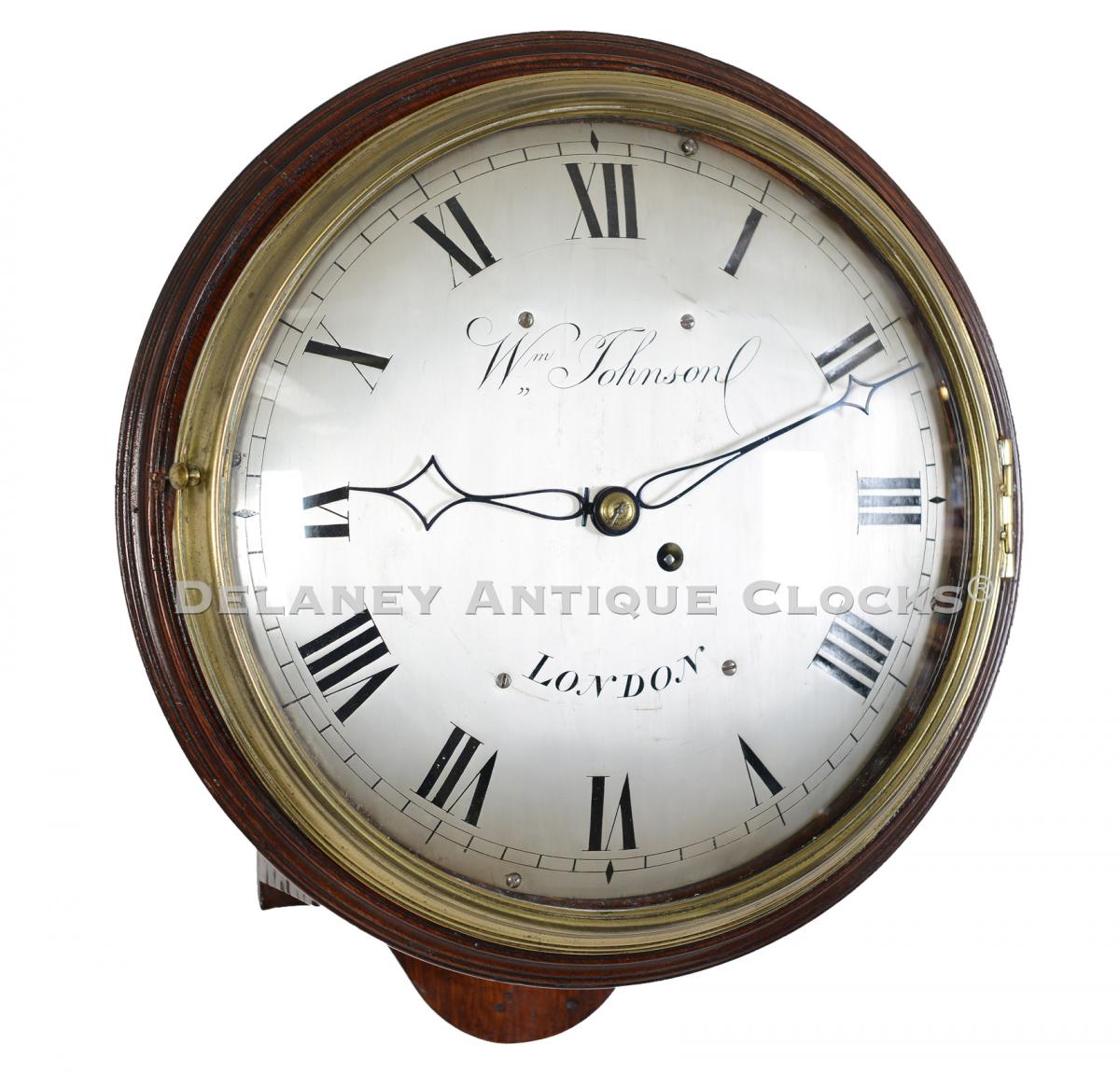William Johnson. An early London-made dial clock in a salt box case. DDD-34.
William Johnson is listed in Brain Loomes new book, “Watchmakers & Clockmakers of the World.” Loomes lists Johnson working in London, England, in about 1790. This dial clock is an early example of a very popular English form.
A slightly bowed piece of glass is mounted in the cast brass bezel. This glass protects the hands and dials’ surface. The brass bezel is nicely formed and is hinged to the case on the right. It opens to access the dial.
This attractive brass engraved dial is finished with a silver wash. It measures approximately 11.5 inches in diameter and is slightly convex, adding visual depth. The dial details are skillfully engraved into the surface and filled with a black paraffin. A silver wash was applied to the dial. This compound adheres to the brass unprotected surfaces of the dial. It does not adhere to the filled engravings. The contrast between the silver and black is sharp. The time ring is formatted with a segmented minute ring having diamonds positioned at each quarter-hour. Small Roman-style hour numerals are located inside the minute ring. The Clockmaker’s name and working location are signed across the middle, “Wm Johnson / LONDON.” This dial is secured to the movement behind it with four dial feet held to the dial with individual screws through the face. The time is indicated by the two original steel hands, which are hand-finished and have been blued.
The eight-day duration movement is heavily constructed. The brass plates are cast and feature a tapered shape. The bottom edge is slightly cut away. The plates are secured with four turned posts. The movement is powered by a large coil spring enclosed in a brass casing. The power train incorporates a fusee cone, compensating for the spring's changes in the power curve. This movement retains its original verge and crown escapement. This means that the bob pendulum is rigidly connected to the verge. As a result, the crown wheel is positioned on a horizontal plane. This early design fell out of favor in the late 1700s and was replaced by the anchor escapement.
The salt box-style case is constructed in mahogany. It also includes the wooden surround, which supports the bezel. The backboard protrudes from the bottom, and the corners are dovetailed. The bezel is secured directly to the box with screws. The peg system of attaching the two is later and much more common. The box has two access doors. One is on the right-side panel. The second is below the movement.
This clock has the following dimensions. 16.25 inches long, 15 inches wide, and 6.25 inches deep.
Inventory number DDD-34.








